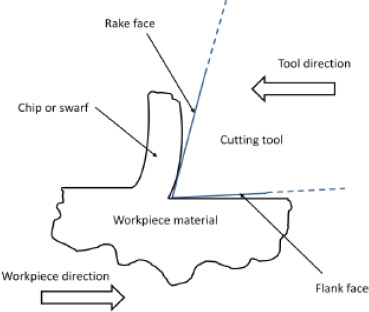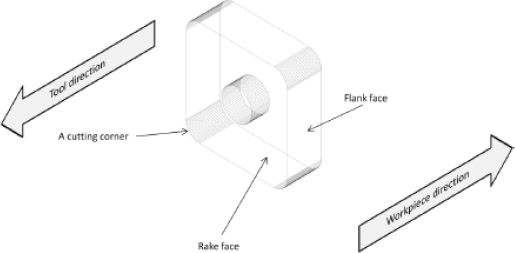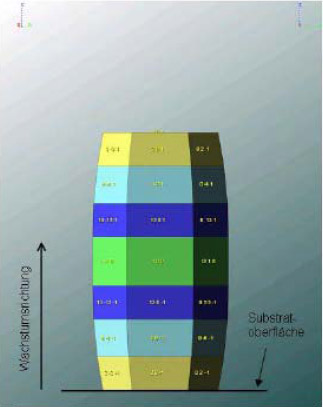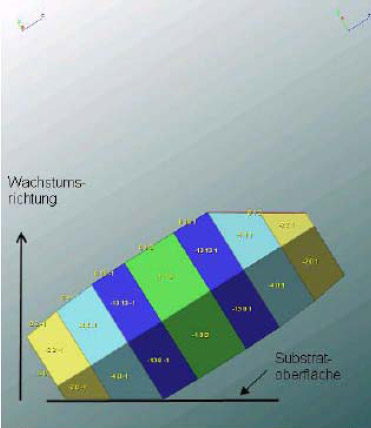Sandvik Intellectual Property AB v Kennametal UK Ltd
| Jurisdiction | England & Wales |
| Judge | THE HON MR JUSTICE ARNOLD,MR JUSTICE ARNOLD |
| Judgment Date | 15 December 2011 |
| Neutral Citation | [2011] EWHC 3311 (Pat) |
| Docket Number | Case No: HC10C02090 |
| Court | Chancery Division (Patents Court) |
| Date | 15 December 2011 |
[2011] EWHC 3311 (Pat)
IN THE HIGH COURT OF JUSTICE
CHANCERY DIVISION
PATENTS COURT
Royal Courts of Justice
Strand, London, WC2A 2LL
The Hon Mr Justice Arnold
Case No: HC10C02090
Iain Purvis QC and Anna Edwards-Stuart (instructed by Charles Russell LLP) for the Claimant
Richard Meade QC and Andrew Lykiardopoulos (instructed by Bristows) for the Defendants
Hearing dates: 16-18, 21-24 November 2011
Further written submissions 8 December 2011
Contents
| Topic | Paragraphs |
| Introduction | 1–2 |
| General technical background | 3–17 |
| Cutting tools | 3–5 |
| Alumina coatings | 6–12 |
| CVD | 13–14 |
| X-ray diffraction | 15–17 |
| The skilled person or team | 18–19 |
| The witnesses | 20–25 |
| Common general knowledge | 26–66 |
| The Chatfield Paper | 28–33 |
| Alumina coated tools generally in 1992 | 34–36 |
| CVD equipment | 37 |
| CVD processes for depositing alumina | 38–39 |
| Texture of alumina coated tools | 40–42 |
| XRD | 43–66 |
| PDF cards | 44–54 |
| Ka2 stripping | 55–61 |
| Thin film correction | 62–64 |
| Other matters | 65–66 |
| The Patent | 67–82 |
| The claims | 83–88 |
| Construction | 89–89 |
| Consisting of single phase a-structure | 92–95 |
| A texture coefficient (TC) larger than 1.3, preferably larger than 1.5 | 96–105 |
| Insufficiency: the law | 106–124 |
| Classical insufficiency | 109–118 |
| Ambiguity | 119–119 |
| Excessive claim breadth | 121–124 |
| Insufficiency: the facts | 125–169 |
| Classical insufficiency | 126–161 |
| Reproducibility of Example 1 | 126 |
| Kennametal's experiment | 127–138 |
| Sandvik's experiment | 139–145 |
| Conclusion on Example 1 | 146–147 |
| Sufficiency across the breadth of claim 6 | 148–160 |
| Conclusion | 161 |
| Ambiguity | 162–165 |
| Excessive claim breadth | 166–169 |
| Lack of novelty | 170–172 |
| Obviousness | 173–200 |
| The prior art relied upon | 175–176 |
| Obviousness of claim 6 | 177–196 |
| The specification | 187–190 |
| Subsequent evidence | 191–195 |
| Conclusion | 196 |
| Obviousness of claim 7 | 197–200 |
| Infringement | 201–212 |
| Conclusions | 213 |
Introduction
In these proceedings the Claimant ("Sandvik") claims that the Defendants ("Kennametal") have infringed European Patent (UK) No. 0 603 144 ("the Patent") entitled "Oxide coated cutting tool". The oxide in question is alumina (Al 2O 3). In fact, claim 1 of the Patent is not limited to cutting tools (that limitation only comes in claim 6), but for all practical purposes this case is about cutting tools. Kennametal denies infringement and counterclaims for revocation on the grounds of lack of novelty, obviousness and insufficiency. Sandvik has made a conditional application to amend claim 1 of the Patent. There is no challenge to the claimed priority date of 18 December 1992.
There is parallel litigation in Germany and the USA. This is relevant for two reasons. First, Kennametal rely by way of hearsay notice on evidence given by three Sandvik witnesses given in US depositions. Secondly, Sandvik relies on the judgment of the Landgericht Düsseldorf dated 1 December 2011 upholding Sandvik's claim for infringement of the German counterpart of the Patent. So far as the latter point is concerned, Kennametal point out that the Düsseldorf Court did not have the validity issues before it, nor did it have a lot of the evidence before this court.
General technical background
Cutting tools
A cutting tool is a tool that is used to remove material from a workpiece by means of shear deformation. Cutting tools must be made from a material harder than the material which is to be cut, and must be able to withstand the heat generated in cutting. Chip forming machining is a general term for machining processes in which a tool is used to remove material from the workpiece in the form of discrete chips or ribbons (also known as swarf):

Machining tools for use in milling and turning operations commonly have one or more lozenge—shaped "inserts" with up to four usable cutting edges:

Inserts of the kind to which this action relates generally consist of a cemented carbide (or other carbide) substrate, a titanium carbide, carbonitride or nitride (TiC, TiCN or TiN) layer and a layer of alumina. The reasons for the choice of alumina as a coating include its hardness and high melting point. Such tools are typically made by chemical vapour deposition ("CVD").
Alumina coatings
Alumina coatings for cutting tools have a number of characteristics relevant to the current dispute. The first is thickness measured in µm (microns). In 1992, alumina layers would typically range from 1 to 10 microns thick, but it was possible to deposit thicker layers.
The second is phase. This refers to the long-range order of the atoms. Some materials can exist in different phases. Alumina can exist in a number of different phases, identified by the Greek letters a, ?, d, ?, ?, ? and ?. These are all crystalline phases i.e. they have a particular long-range order. The two phases which are most relevant to the present case are a and ?. a-alumina (corundum) is the most thermodynamically stable phase. ?-alumina is metastable, and at high temperatures it transforms to a-alumina. In addition, alumina may be amorphous, that is to say, having no long range order.
The third characteristic is grain size expressed in µm. This is a measure of the size of individual alumina crystal grains. When alumina nucleates on a substrate, alumina nuclei will form. A nucleus is a collection of atoms of a material which one is interested in depositing and which is large enough to support growth rather than spontaneously disappear. The nuclei are islands of crystal which eventually join together, forming grains. In 1992 it was well known that the grain size of the coating should be minimised to deliver high hardness and toughness and to produce a smooth coating surface which reduces cutting forces and improves the surface finish on the workpiece after cutting.
The fourth characteristic is texture. This refers to the orientation of the individual crystals. Not all the individual crystals in a coating will be in the same orientation, and often there will be a mixture of orientations. Crystal planes are defined by a notation system called Miller indices, integers represented by the letters hkl. Each plane is identified by three indices written as (hkl), for example (001). (Sometime a fourth index is included as well, but it is not necessary to go into this.) There are over 50 different crystal planes for alumina. A crystal is said to be oriented in the (001) direction when it is oriented in the direction normal to the (001) crystal plane. This means that the (001) crystal plane is parallel to the substrate and the growth direction is normal to the (001) plane. In this figure the direction of growth is shown by the arrow:

Similarly, a crystal is said to be oriented in the (012) direction when it is oriented in the direction normal to the (012) crystal plane. This means that the (012) crystal plane is parallel to the substrate and the growth direction is normal to the (012) plane:

Texture can be expressed by a number referred to as the texture coefficient or TC (also referred to as T*). This is calculated using a mathematical formula known as the Harris formula. This is set out in the Patent and I reproduce it below. In essence, it gives the ratio of the orientation in question to the average orientation. This is calculated from X-ray diffraction measurements, as to which see below. In the Patent, only six orientations are measured, namely (012), (104), (110), (113), (024) and (116). Thus the results might be:
| TC(012) = | 1.4 |
| TC(104) = | 1.5 |
| TC(110) = | 0.6 |
| TC(113) = | 1.0 |
| TC(024) = | 0.9 |
| TC(116) = | 0.6 |
The values add up to 6, and so the average is 1. If any plane had a value of 6, that would mean that all of the crystals were oriented in that plane when compared with the other five planes specified in the Patent (although other crystals might be orientated in planes not specified). A value of 0 would mean that none of the crystals were in that plane. A value of 1.0 in each plane would indicate a truly random sample (among the planes specified in the Patent). In the example given, it can be seen that the texture coefficient in the (012) direction is 1.4, indicating some degree of preference for that orientation. The texture coefficient in the (104) direction is 1.5, indicating a slightly higher degree of preference for that orientation.
CVD
CVD is a common technique for the deposition of coatings. It was the only commonly known technique for deposition of alumina coatings on cutting tools in 1992. In the CVD process the coating is generated in situ by the reaction of gases. Usually, volatile molecular species are transported in the vapour phase to a heated substrate where adsorption and reaction occur to deposit a solid coating. A typical CVD system will thus contain a vapour production system, a reactor chamber which contains the samples to be coated and an effluent treatment system. Deposition typically occurs at or below atmospheric pressure.
Alumina is usually deposited by reacting aluminium trichloride (AlCl 3) with water generated from hydrogen and carbon dioxide by the water gas shift reaction:
H 2 + CO 2 H 2O + CO
AlCl3 + 3 H2O -> Al2O3 + 6 HCl
X-ray diffraction
X-ray diffraction is a convenient non-destructive analysis technique that has been widely...
To continue reading
Request your trial-
Regeneron Pharmaceuticals Inc. v Kymab Ltd and Another
...referred me to the comprehensive summary of the law of "classical insufficiency" and "excessive claim breadth" set out by Arnold J in Sandvik v Kennametal [2012] RPC 23 at [106]–[124]. I shall apply those principles. I set out below certain aspects of the law which are of particular releva......
-
Re Boehringer Ingelheim Pharma GmbH & Company Kg & Patents Acts
...a technical contribution has been made and that there is an inventive step. In Sandvik Intellectual Property AB v. Kennametal UK Ltd [2012] R.P.C 23, Arnold J. observes as follows, at para. 185: '[T] he principles to be applied in determining whether a claimed invention is obvious are the ......
-
Idenix Pharmaceuticals, Inc. v Gilead Sciences, Inc. and Others
...require a different approach when determining validity from other patents… " 440 Having reviewed these authorities in Sandvik Intellectual Property AB v Kennametal UK Ltd [2011] EWHC 3311 (Pat), [2012] RPC 23, I concluded at [185] as follows: "Where it is suggested that a claimed invention......
-
Actavis Group PTC EHF (a company incorporated under the laws of the state of Iceland) v ICOS Corporation (a company incorporated under the laws of the state of Washington, USA); Actelion Pharmaceuticals Ltd (a company incorporated under the laws of the st
...The factual circumstances in which such a truly ambiguous claim has been identified so far in the modern law ( Kirin-Amgen and Sandvik v Kennametal [2011] EWHC 3311 (Pat)) are ones which depend on carrying out a technical test to find out if a product or process is within the claim or not. ......
-
IP Bulletin - Winter issue - 21 February 2012
...and the burden of proof for a positive case for non-infringement. Sandvik Intellectual Property AB v Kennametal UK Ltd and another [2011] EWHC 3311 (Pat), 15 December The High Court has held that a patent relating to alumina coatings for cutting tools was invalid on the ground of insufficie......

